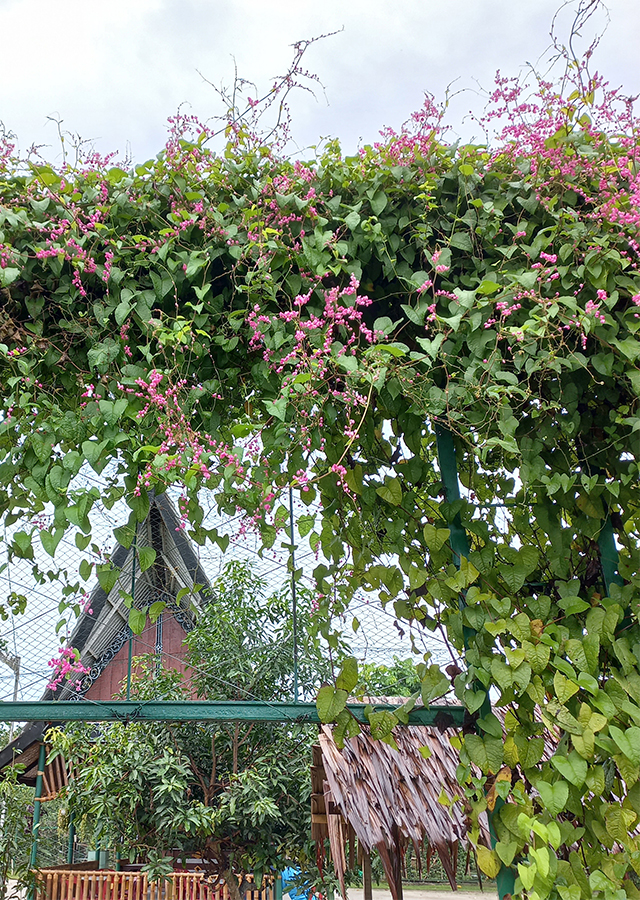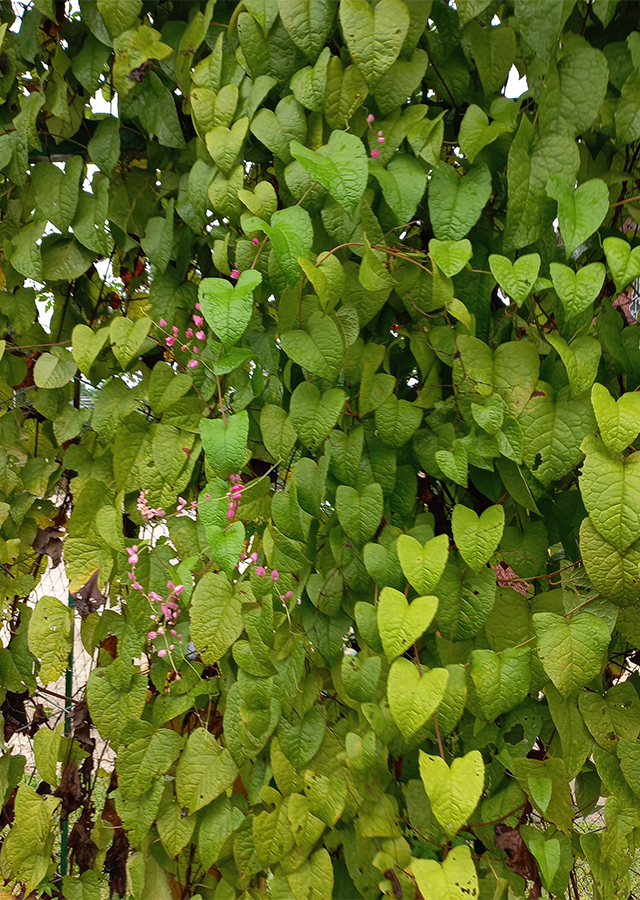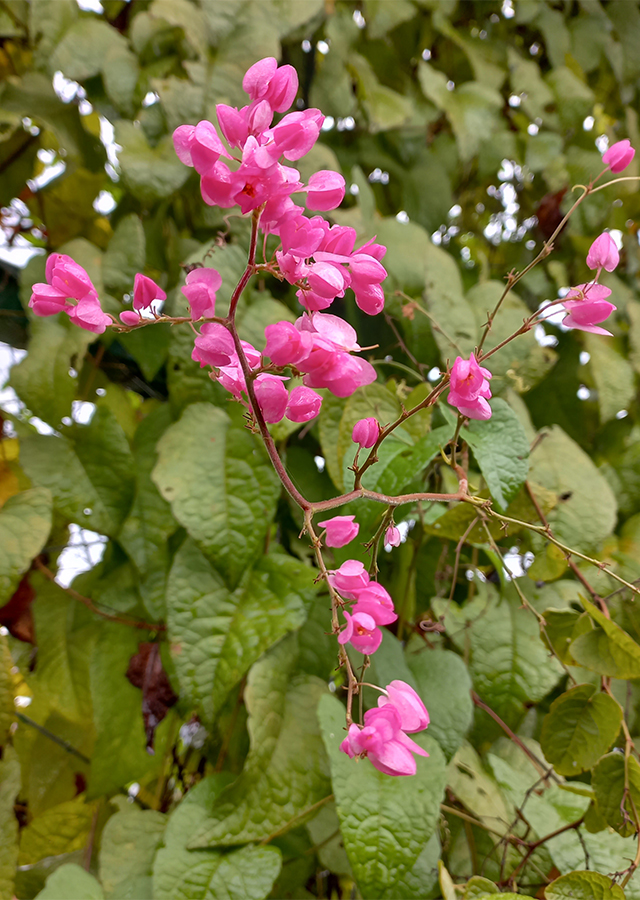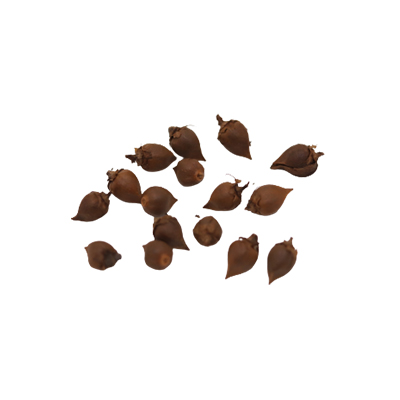Coral Vine
Antigonon leptopus Hook. & Arn.
Polygonaceae
Location in our garden
Principal



Synonym
Antigonon cinerascens M.Martens & Galeott
Antigonon cordatum M.Martens & Galeotti
Antigonon platypus Hook. & Arn.
Habitus
Climbers. A herbaceous climbing plant that produces large clusters of pink flowers
Part Used
Leaves
Seeds
Fruit
Stem
Growing Requirements
Full Sunshine
Habitat
Forest
Coastal
Roadside
Terrestrial
Overview
Native to Mexico. Outside its native range, this species is widely naturalized and cultivated as an ornamental in warm, tropical climates around the world, including Africa, India, Australia, North, Central and South America, West Indies, and numerous islands in the Pacific Ocean. Widely grown as an ornamental, where it can be used as a ground cover, the plant is also sometimes harvested for its edible root and leaves.
Vernacular Names
Cadena de amor (Philippines), Bellísima (Spanish), Antigone à pied grêle (French), Coral creeper (Australian), Amor agarradinho (Brazilian), Bellosinia (Puertorican).
Agroecology
Found in damp thickets and hedges at elevations up to 1,500 m. Prefers a fertile, well drained soil in a sunny position. A soil that is too rich in nitrogen will result in rank growth and poor flowering. It grows well in disturbed areas and is well adapted to dry coral cliffs and their derived soils. It tolerates drought by defoliation and regrows strongly after rain.
Morphology
- Stems - puberulent, pentagonal, with many lateral branches.
- Leaves - alternate, ovate, triangular-ovate, or almost lanceolate, chartaceous, the apex is acute or acuminate, the base is cordiform or truncate, and the margins are crenulate, sometimes ciliate. The upper surface of leaves is light green slightly shiny, puberulent, with the venation sunken; lower surface pale green, puberulent or glabrous, with prominent venation; petioles are 1-5 cm long, reddish, puberulent, cylindrical or subwinged.
- Flowers - bisexual, in axillary racemes or terminal panicles, 10-20 cm long, terminating in a pair of spiral tendrils; pedicels 3-4(-10) mm long. The perianth is about 4-7 mm long, of 5 ovate or elliptical tepals, intense pink or white; staminal column 2-3 mm long, of the same colour as the tepals.
- Fruits - 3-angle-achene, 5-8 mm long.
Cultivation
Propagated by seeds and cuttings.
Chemical Constituents
Alkaloids, quinines, resins, tannins, flavonoids, saponins, carboxylic acids, amino acids, steroids, phytosterols, triterpenoidal sapogenins, xanthoproteins, coumarins, n-hentriacontane, ferulic acid, 4-hydroxycinnamic acid, quercetin-3-rhamnoside, kaempherol-3-glucoside along with ß-sitosterol, ß-sitosterol-glucoside and d-mannitol.
Traditional Medicinal Uses
- Studies have shown anti-thrombin, analgesic, anti-inflammatory, anti-diabetic and lipid peroxidation inhibitory properties.
- Leaves used reduce swelling; tea leaves used for diabetes; blossoms used for high blood pressure.
- Decoction of aerial parts used as a remedy for colds and pain relief.
- In the Philippines, an isolated report of use by Ifugao-migrants in the foothills of the Sierra Madre for wound closure.
- In Trinidad and Tobago, used for diabetes, low blood pressure, and as a heart tonic.
- In Sudan, leaves used for cough and throat constriction.
Part Used
Reference Sources
- StuartXchange. Philippines Medicinal Plant. (2016). Antigonon leptopus. http://www.stuartxchange.org/CadenaDeAmor. 09-09-21
- Fern, Ken. Tropical Useful Plants. (2021). Antigonon leptopus. http://tropical.theferns.info/viewtropical.php?id=Antigonon+leptopus. 09-09-21
- Cabi. Antigonon leptopus. https://www.cabi.org/isc/datasheet/112316. 09-09-21



